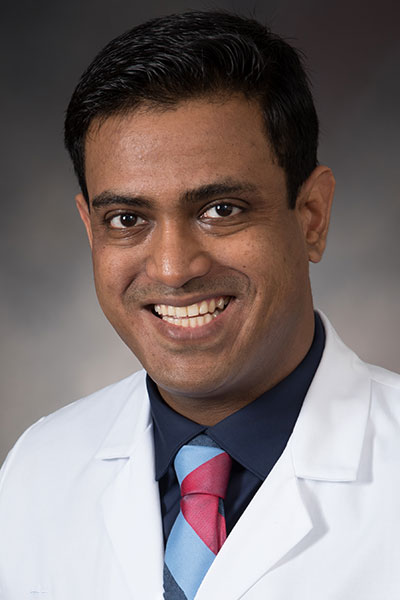
Sarcoidosis is most commonly seen in the lungs and lymph nodes, but sarcoid granulomas can, and do, occur in other tissues as well.
“More than 70% of the time, sarcoid disease manifests in the lungs, but given the nature of the disease and the recognition that it can be multisystemic, it has become more important for pulmonologists to be aware of the range of extrapulmonary manifestations,” said Parijat Sen, MD, MBBS, FCCP, assistant professor of pulmonary, critical care, and sleep medicine at the University of Kentucky College of Medicine. “Pulmonologists are likely seeing patients with more than just lung manifestations. You have to be the one who knows how to screen for involvement outside the lungs and very possibly be the one to manage them.”
Dr. Sen is part of a panel discussion of Key Extrapulmonary Features of Sarcoidosis on Wednesday, October 19, from 3:30 PM – 4:30 PM CT in Room 102AB. The panel will be chaired by Daniel Culver, DO, FCCP, chair of pulmonary medicine at Cleveland Clinic.
Dr. Sen noted that although sarcoidosis has been studied and managed by specialists around the globe for some time, a growing number of dedicated sarcoid centers and clinics have evolved over the past decade. Most are staffed largely with pulmonologists, the specialty most likely to encounter sarcoidosis. Many centers also have rheumatologists, cardiologists, and other specialists to provide a multidisciplinary approach to this multisystemic disease. However, many times this disease will be encountered by the pulmonologist outside such specialized centers. The panel aims to empower them to tackle the multisystemic nature of the disease.
The panel reflects that same focus on pulmonologists. Ogugua Obi, MD, MPH, MSc, assistant professor of pulmonary, critical care, and sleep medicine, heads a sarcoidosis center of excellence at East Carolina University. She will discuss the latest findings in cardiac sarcoidosis.
Dr. Culver will focus on neuro and ophthalmic sarcoidosis. He is the current president of the World Association of Sarcoidosis and Other Granulomatous Disorders.
Selvin Jacob, MD, pulmonary and critical care fellow at McGovern Medical School, UTHealth Houston, will explore the latest approaches in the detection and management of cutaneous sarcoidosis. Dr. Sen will lead the discussion on sarcoid-related hypercalcemia, kidney disease, and arthropathy.
“The most important extrapulmonary manifestations are probably the heart and central nervous system, including the brain,” Dr. Sen said. “They are much more severe and can be life-threatening compared to some of the other organ environments. Sarcoidosis can also affect calcium metabolism, manifesting in the kidneys and bones, as well as the skin.”
Treatment is generally aimed at reducing morbidity and mortality, protecting organ function, and improving quality of life. Important pharmacotherapy options include corticosteroids and other antiinflammatory agents and immunosuppressants. “We have some of the leading experts in the world on sarcoidosis, which is going to make for a very interesting session,” Dr. Sen said. “And because this is a panel discussion, we will be making it as interactive as possible and encouraging questions from the audience.”
Join us at CHEST 2025
Save the date for the next Annual Meeting, October 19 to 22, 2025, in Chicago. CHEST 2025 will explore the latest advancements in pulmonary, critical care, and sleep medicine, with a focus on innovation and the future, just as the city itself embodies progress and reinvention.





